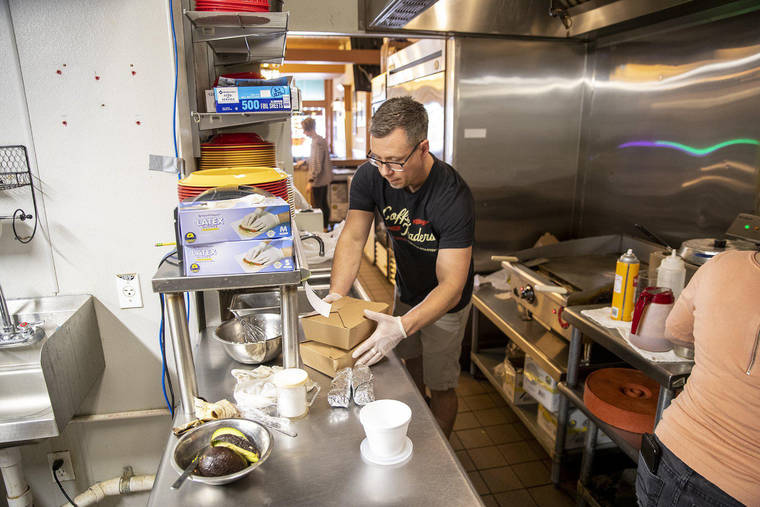Food inflation has arrived, according to newly released data from the Bureau of Labor Statistics. And that means slimmer profits for many already-ailing restaurants even as diners pay more for meals.
Full-service restaurant prices rose a record 0.9% in June from a month earlier. At the same time, home cooking grew costlier: Grocery prices rose 0.7% from the prior month and 5.6% from a year ago, the largest increase since 2011.
Overall inflation has remained subdued amid a slower climb in rents.
Restaurants, which just started reopening in many states, are serving fewer customers as they adhere to social-distancing requirements, which is crimping sales. Rising labor costs and difficulties hiring during the pandemic are adding to their woes.
“Currently our labor costs are greater than our sales for lunch Monday through Thursday,” said Geoff Tracy, a Washington, D.C. restaurateur who is cutting back his hours. “You don’t need an MBA to know that model does not work.”
At Taco John’s International Inc., a fast-food chain with about 400 mostly franchised restaurants, employee expenses are putting pressure on menu prices, said Chief Executive Officer Jim Creel.
“I think where we’re going to see a price increase is going to be labor,” Creel said. “It almost feels like it’s going to be worse” coming out of COVID-19.
The Cheyenne, Wyo.-based company is looking to hire roughly 10 workers per restaurant as dining rooms slowly begin to re-open, but it’s tough to find people. Many are reluctant to work around the public and are making enough with unemployment to delay entering the workforce, he said.
“We’ve been trying throughout the whole pandemic to hire crew members and we’re just not having a whole lot of luck,” he said.
As restaurants struggle, some have added COVID-19 surcharges in response to rising food prices and the costs associated with adding personal protective equipment.
The restaurant industry has always been a low margin business and this pandemic has just made it more challenging, said Tracy.
Many restaurants, along with other small businesses, have been bolstered by the Payroll Protection Program and other government stimulus efforts.
“Once the money runs out, once the landlords want their rent come fall — it’s over for most restaurants,” he said.



